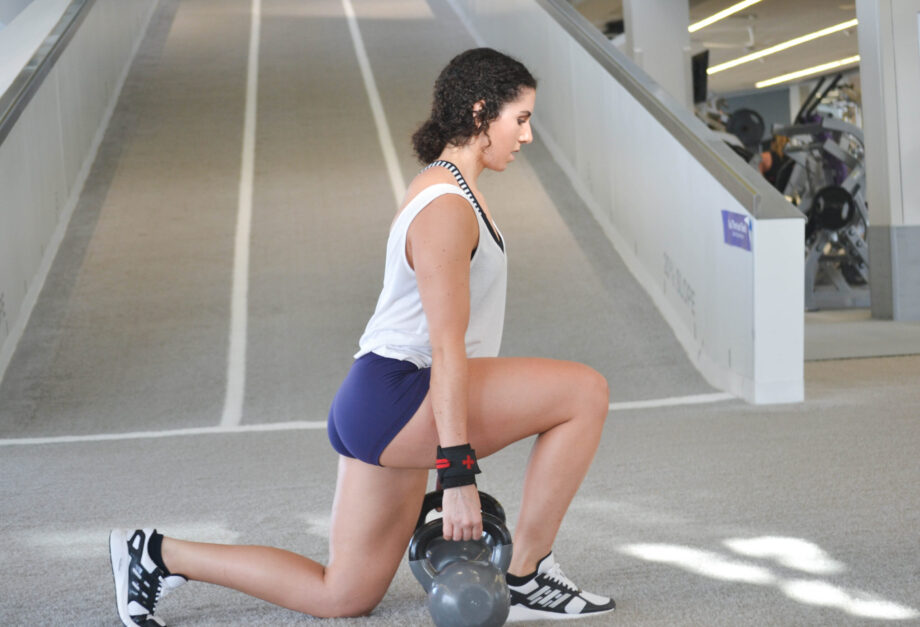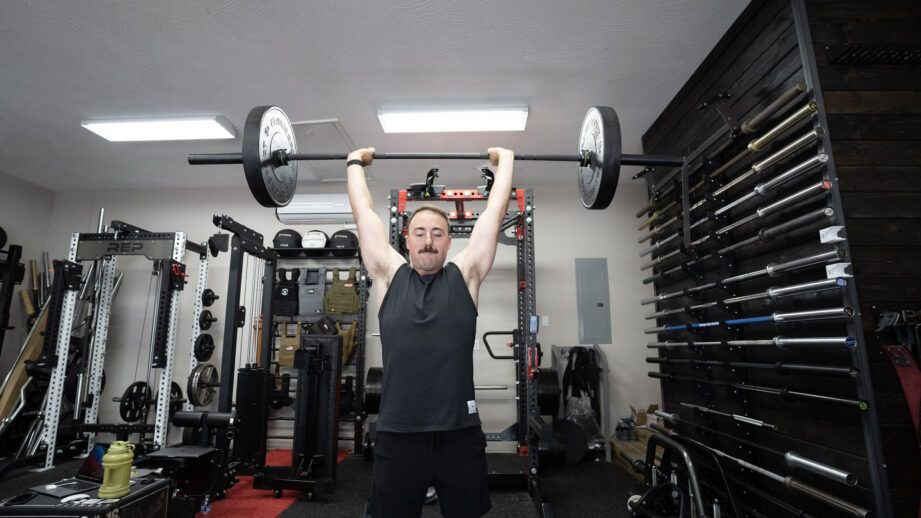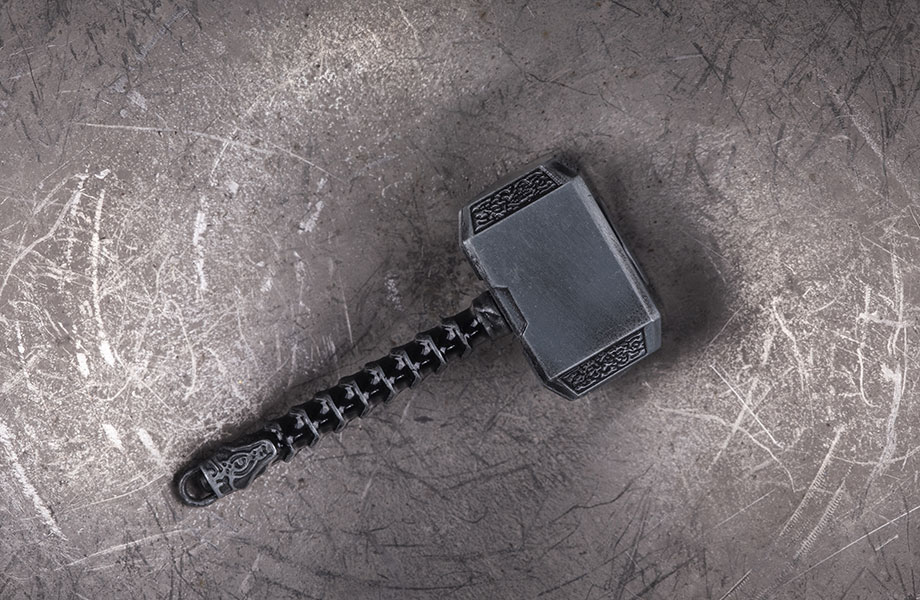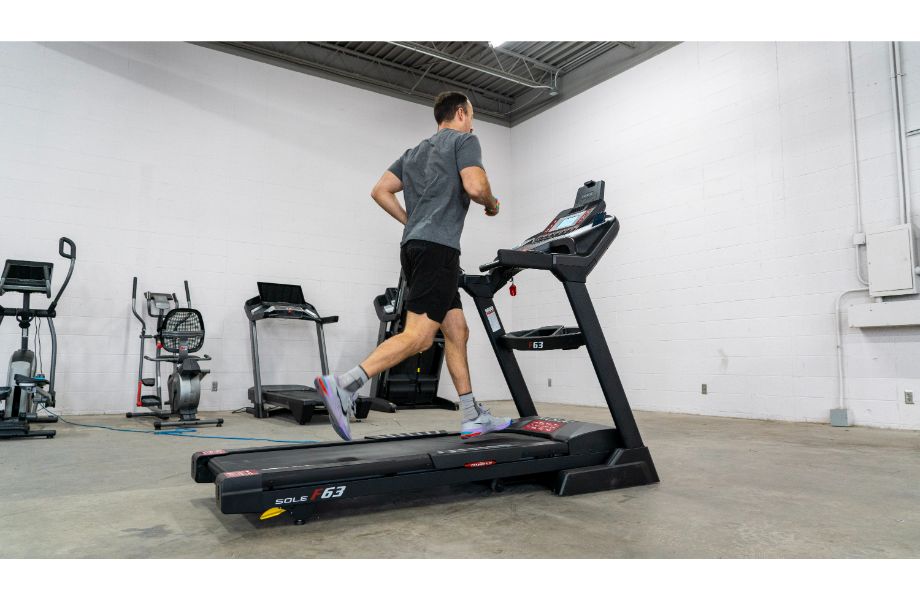What’s not to love about walking lunges? They’re simple to learn, require no equipment to perform, build functional strength, and provide activation to numerous posterior chain and lower-body muscles. Plus, they pair well with free weights if you’re looking for extra oomph in the form of resistance, making them versatile.
RELATED: What Muscles Do Lunges Work?
Kate Meier, NASM-CPT, USAW-L1, CF-L1, and GGR senior director of content, discusses this legendary lower body movement, providing step-by-step instructions, variations, alternatives, benefits, and more! So, grab your water bottle, tighten your shoelaces, and let’s start walking!
RELATED: Best Walking Shoes
How To Do Walking Lunges
Virtually all lunge exercise variations involve stepping into a staggered stance, thus testing your leg strength, muscle endurance, balance, and lower-body mobility. What makes the walking lunge special is that you do all the above while maintaining forward momentum for reps.
How to do it:
- Stand with your feet hip-width apart.
- Take a medium to large step forward with your left foot.
- Shift your weight into the front foot, letting your front knee and back knee bend as you move. Continue until both knees are bent at a 90-degree angle.
- Pause, then drive through your front heel while stepping forward with your right foot.
- Shift your weight into your front leg again, bending both knees, and pause.
- Continue alternating sides on each rep until you complete the desired distance or number of repetitions.
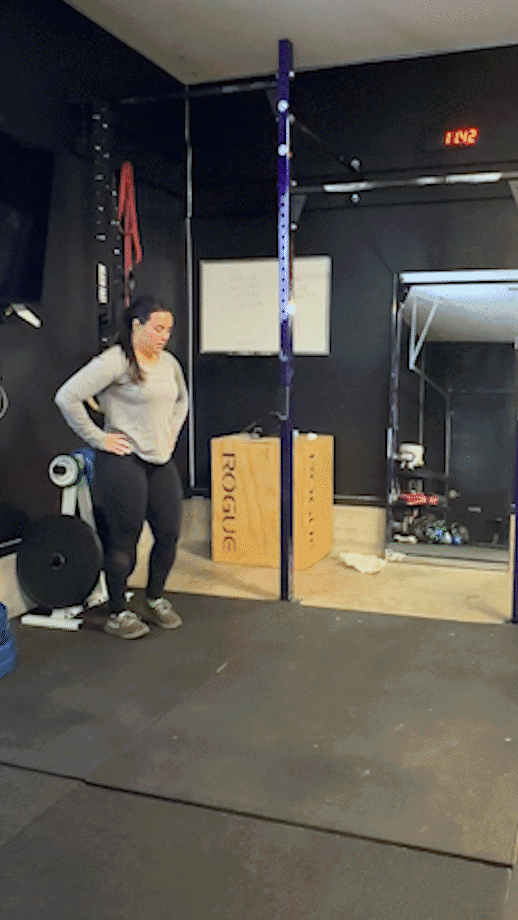
Modifications
- Dial it back: If walking lunges are too difficult, reduce your lunge depth, shorten your stride, or switch to reverse lunges.
- Make it harder: Select your preferred free weight and perform weighted walking lunges. You can also add a twist with each step to fire up your obliques.
How To Do Walking Lunges At Home
The standard walking lunge requires no equipment, meaning it’s already an excellent and intuitive choice for your home gym leg day!
Walking Lunge Variations
- Dumbbell walking lunge: Grabbing a pair of the best dumbbells is a simple way to enable progressive overload for your walking lunges. You can hold the weights at your sides (like suitcases) or in the front-rack position to increase your upper-body involvement.
- Barbell walking lunge: You can also use a barbell for added resistance. The easiest and most common form is resting the bar behind your head, across your upper back and shoulders, but front-rack walking lunges are also an option.
- Kettlebell walking lunge: No dumbbells? No problem! You can perform suitcase walking lunges with two kettlebells or grab one heavy kettlebell for goblet lunges.
RELATED: Kettlebell Leg Workout
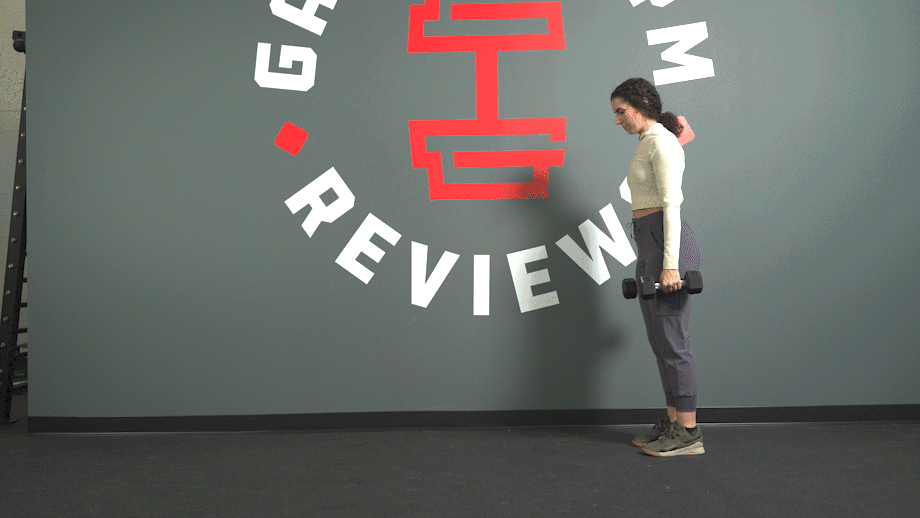
Walking Lunge Alternatives
The walking lunge is generally accessible, but you may find yourself looking for an alternative to keep your programming fresh. Here are some of our favorite walking lunge alternatives.
Forward Lunge
Why do it: “Walking lunges require greater strength, balance, and coordination than forward lunges,” says Kate Meier, NASM-CPT, USAW-L1, CF-L1. “So, the forward lunge may be a better option for beginners. It’s also generally easier to add free weights to the forward lunge for that reason.”
How to do it:
- Stand with your feet hip-width apart.
- Step forward with your left foot.
- Shift your weight into your front foot, letting your front and back knees bend as you move.
- Continue until both knees are bent at a 90-degree angle and hold the position.
- Drive through your front heel and step your left foot back to the starting position.
- Repeat the above steps, this time stepping forward with your right foot.
- Continue alternating sides for each rep until you’ve finished the set.
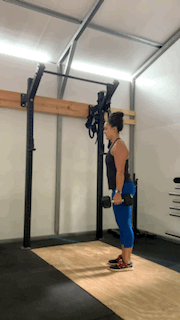
Reverse Lunge
Why do it: According to Physical Therapy in Sport1, individuals with knee pain may consider the reverse lunge variation because of the reduced loading and stress on the knee joint. Like front lunges, they’re also slightly easier to perform than walking lunges since you stay in place.
How to do it:
- Stand with your feet hip-width apart.
- Step backward with your left foot, bending both knees as you move.
- Continue until both knees are bent at a 90-degree angle and hold the position.
- Drive through your front heel and step your back leg back to center.
- Repeat the above steps, this time stepping back with your right foot.
- Continue alternating sides on each rep until you’ve finished the set.
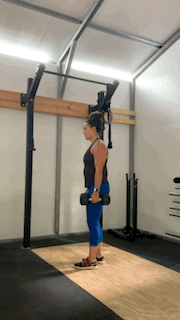
Split Squat
Why do it: The split squat uses the same muscles as your standard lunge exercise, the main difference being that your feet remain stationary during the split squat. According to Frontiers in Bioengineering and Biotechnology2, this alternative is excellent for building “strength of the lower extremity in a relatively stabilized position” since it involves no sagittal plane movement.
How to do it:
- Stand with your feet shoulder-width apart.
- Step back with your right foot to enter a split stance.
- Slowly lower your body until your knees form 90-degree angles.
- Pause, then drive through the heel of your front foot to stand back up.
- Repeat as needed, then repeat the set with your left foot back.
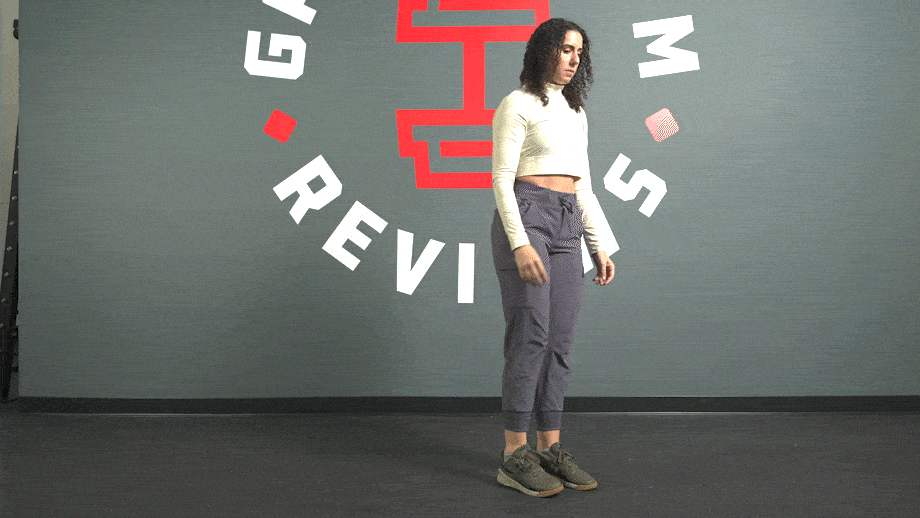
Jumping Lunge
Why do it: “Jumping lunges target the same muscle groups as the regular lunge—the glutes, quads, hamstrings, and hip flexors—but that’s not all,” says Kate. “Adding the jump creates a cardiovascular stimulus that increases your heart rate and builds explosive power, too.”
How to do it:
- Start in the lunge position with one foot forward, the opposite arm forward, and both knees and elbows bent to form 90-degree angles.
- Lean forward slightly, brace your core, and explode into a jump.
- Bring your back leg to the front and your front leg to the back in midair.
- Land softly and immediately drop into another deep lunge.
- Repeat for reps.
RELATED: Plyometric Exercises
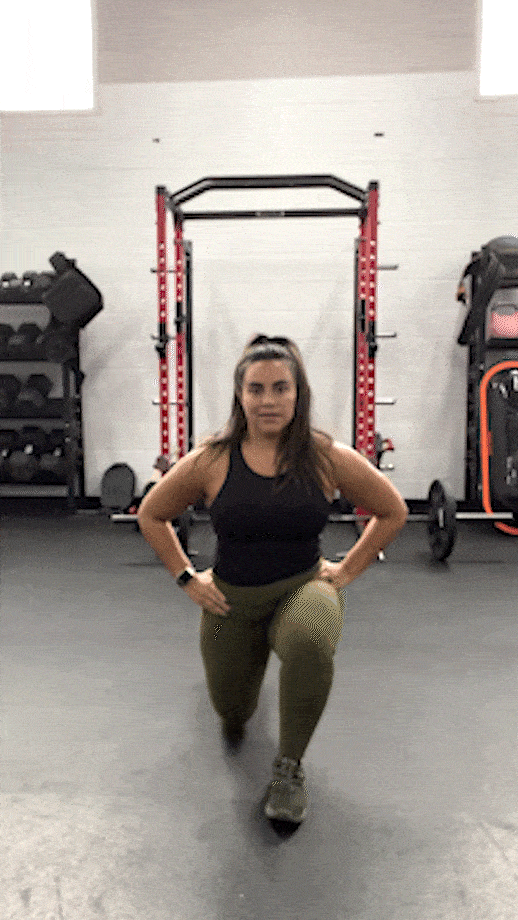
Pendulum Lunge
Why do it: “The pendulum lunge combines the forward and reverse lunge exercises in one succinct movement,” says Kate, “so each rep essentially accomplishes double the work and requires greater balance and coordination than either exercise alone.”
How to do it:
- Start with your feet hip-width apart and step forward with your left foot.
- Shift your weight forward, bend your knees, and complete your forward lunge rep.
- Push through your front heel and step your left foot back past the starting position and directly into a reverse lunge. Do not touch the floor until you reach your end position.
- Push through your front foot again and step forward, passing the starting position again and proceeding directly into another forward lunge.
- Continue bringing the left foot forward and back until you’ve finished your set.
- Repeat with your right foot.
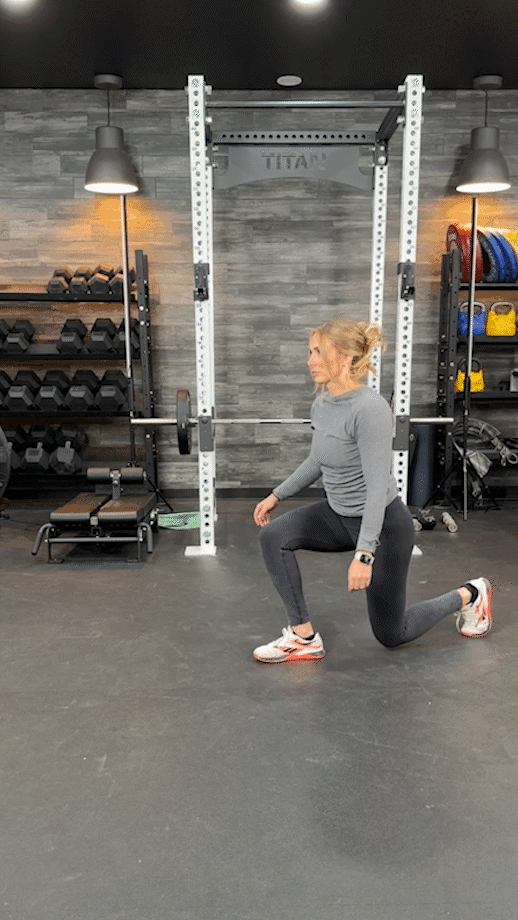
Benefits of Walking Lunges
There’s a reason personal trainers, coaches, and group fitness instructors worldwide heavily prescribe this functional movement. Walking lunges can be highly effective when done using proper form. Here are a few benefits associated with walking lunges.
May Help Increase Unilateral Strength
There are tons of lower-body exercises to work into your strength training routine, but many of them, the almighty squat included, have one glaring shortcoming: they’re bilateral movements. Even though you can build exceptional leg strength and muscle with these exercises, you may wind up with uneven growth due to a bilateral strength deficit.
RELATED: Unilateral Exercises
The walking lunge and other lunge variations involve working a single leg at a time, so you’ll get more activation, ensure even growth, and help correct muscle imbalances.
According to Biology of Sport3, building unilateral strength is imperative for maximizing sports performance, as various sport-specific skills like “running, changing direction, jumping, [and] kicking” are unilateral movements.
So, it’s worth it to work in a few sets of walking lunges, even if you’re killing it on the squat rack.
May Help Enhance Functionality
Walking lunges aren’t just for athletes; everyone can enjoy enhanced functionality associated with performing walking lunges regularly. That’s because walking lunges are highly functional, closely imitating many movements you already do in your everyday life.
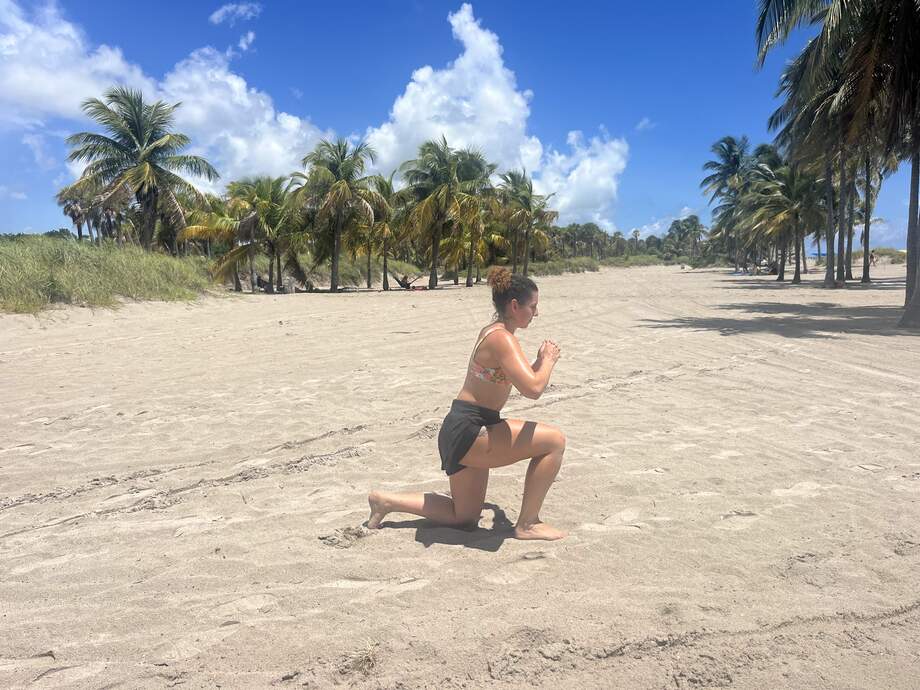
For example, walking lunges mimic the movements you perform when walking, walking uphill, or walking upstairs, so you should find yourself moving through your world a little easier if you’re doing walking lunges on the reg.
RELATED: What Is Functional Fitness?
May Help Improve Balance
A 2022 study in Physical Activity and Nutrition4 found that middle-aged women showed great improvements in muscle function, static balance, and dynamic balance following an eight-week exercise program involving lunges on stable and unstable surfaces.
RELATED: Balance Exercises
“Walking lunges are especially helpful for building better balance since you have to stabilize yourself with each stride,” says Kate. “Forward and reverse lunges provide a balance challenge too, but walking lunges require even greater balance and coordination to perform successfully.”
Common Walking Lunge Mistakes
The walking lunge, similar to regular walking, is intuitive, but that doesn’t mean it’s impossible to make mistakes. Here are a few of the most common ones to keep an eye out for.
Poor Upper Body Posture
Just because walking lunges are a lower-body exercise doesn’t mean you can pay no mind to what your upper body is doing. You want to maintain a tall and rigid posture up top, checking in for the following features:
- Your neck should be neutrally aligned
- Your shoulders should be relaxed
- Your back should be straight
- Your chest should be tall
- Your core muscles should be tight
- Your eyes should track forward
“Rounding the body forward not only places undue stress on the spine, but could compromise your balance, too,” says Kate, NASM-CPT, USAW-L1, CF-L1. “Stumbling and falling is not ideal if you’re performing bodyweight lunges, but it’s especially dangerous if you’re working with weights.”
RELATED: Best Leg Exercises
Not Going Deep Enough
It’s tempting to take shorter steps and shortchange that range of motion when your gams are howling, but not going deep enough deprives you of the muscle activation needed to make strength and hypertrophy gains.
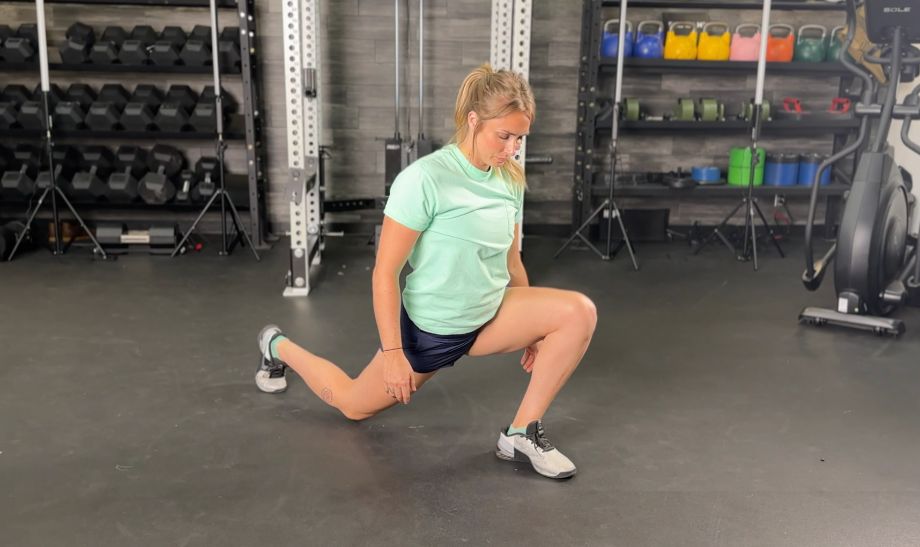
“Aim to be consistent with your stride length and lunge depth,” says Kate. “Your first rep and last rep should look identical. If you’re having difficulty maintaining that consistency, try doing fewer reps per set or consider working with a personal trainer to spot your form.”
Not Controlling the Descent
Ideally, you want to step into your lunge, shift your weight forward while bending your front knee, and slowly bend the back knee as it gradually reaches the floor. You may tap the floor with that back knee, but don’t, under any circumstances, slam it down.
“Letting gravity do the work during the eccentric phase deprives you of muscle activation and increases your risk of injury,” says Kate. “Instead, slowly descend, holding tension in all your target muscle groups, and lightly touch down. This maximizes your time under tension and reduces your risk of hurting your delicate kneecap or knee joint.”
Muscles Worked by Walking Lunges
You’ll need powerful lower-body muscles and legs to perform walking lunges with proper form. The primary muscles involved include:
- Glutes: That massive muscle on your derriere is responsible for hip extension and flexion. Each walking lunge involves moving from a fully extended position to a flexed position, which your gluteus maximus facilitates.
- Quadriceps: Your quads assist in hip flexion and knee extension, making them crucial for controlling the eccentric phase and producing force during the concentric phase.
- Hamstrings: Your hammies form an antagonistic pair with your quadriceps, helping flex your knee during the eccentric phase. They receive less activation than the quads, but they’re important nonetheless.
- Core Muscles: It’s hard work holding a rigid upright posture with each walking lunge rep. Bracing your core helps you maintain the proper positioning, stabilize your body, and keep your balance as you move.
RELATED: Gluteus Maximus Exercises
Walking Lunges: Final Thoughts
So, I ask again: what’s not to love about walking lunges?
With minimal or no equipment, you can target various lower body muscle groups, build strength and muscle, improve balance, increase mobility, and enhance your overall health and wellness by improving your functional fitness.
Step toward your fitness goals and work walking lunges into your next leg day workout!
Walking Lunges: FAQs
What do walking lunges work?
Walking lunges activate your glute, quad, hamstring, calf, and core muscles. They also challenge your balance, flexibility, and mobility, making them excellent for this type of functional training. Last, lunges are a unilateral exercise, so they can help you build strength on both sides and correct muscle imbalances.
Are walking lunges as good as squats?
Squats and walking lunges can both be effective lower-body exercises, so it’s hard to establish the best.
Squats are one of the best weightlifting movements, providing a near full-body workout while especially emphasizing the lower body muscle groups, but they’re a bilateral movement, meaning they don’t effectively address muscle imbalances.
Walking lunges, on the other hand, provide the lion’s share of muscle activation to one leg at a time, helping correct imbalances and ensure even growth. That said, the balance challenge they pose makes it more difficult to perform them with heavy weights.
So, both are exceptional exercises, with the squat serving as your better all-purpose strength exercise and the walking lunge edging out the competition in terms of functionality. However, you don’t need to play favorites; the best leg workout can feature both exercises!
Are walking lunges bad for your knees?
“Lunges and lunge variations may subject your knees to stress, but if performed correctly, they tend to be good for your knees,” says Kate Meier, NASM-CPT, USAW-L1, CF-L1, and GGR senior director of content.
Walking lunges are generally harder on your knees than other variations, so consider using the reverse lunge if you have sensitive knees. If you have a preexisting condition or have suffered a past knee injury, consult with your doctor (or other qualified health professional) before performing any exercise that could exacerbate your condition.
RELATED: Best Knee Sleeves
References
1. Goulette D, Griffith P, Schiller M, Rutherford D, Kernozek TW. Patellofemoral joint loading during the forward and backward lunge. Phys Ther Sport. 2021;47:178-184. doi:10.1016/j.ptsp.2020.12.001
2. Song Q, Ma M, Liu H, Wei X, Chen X. Effects of step lengths on biomechanical characteristics of lower extremity during split squat movement. Front Bioeng Biotechnol. 2023;11:1277493. Published 2023 Nov 10. doi:10.3389/fbioe.2023.1277493
3. Liao KF, Nassis GP, Bishop C, Yang W, Bian C, Li YM. Effects of unilateral vs. bilateral resistance training interventions on measures of strength, jump, linear and change of direction speed: a systematic review and meta-analysis. Biol Sport. 2022;39(3):485-497. doi:10.5114/biolsport.2022.107024
4. Lee J, Kim J. Effects of an 8-week lunge exercise on an unstable support surface on lower-extremity muscle function and balance in middle-aged women. Phys Act Nutr. 2022;26(4):14-21. doi:10.20463/pan.2022.0020


